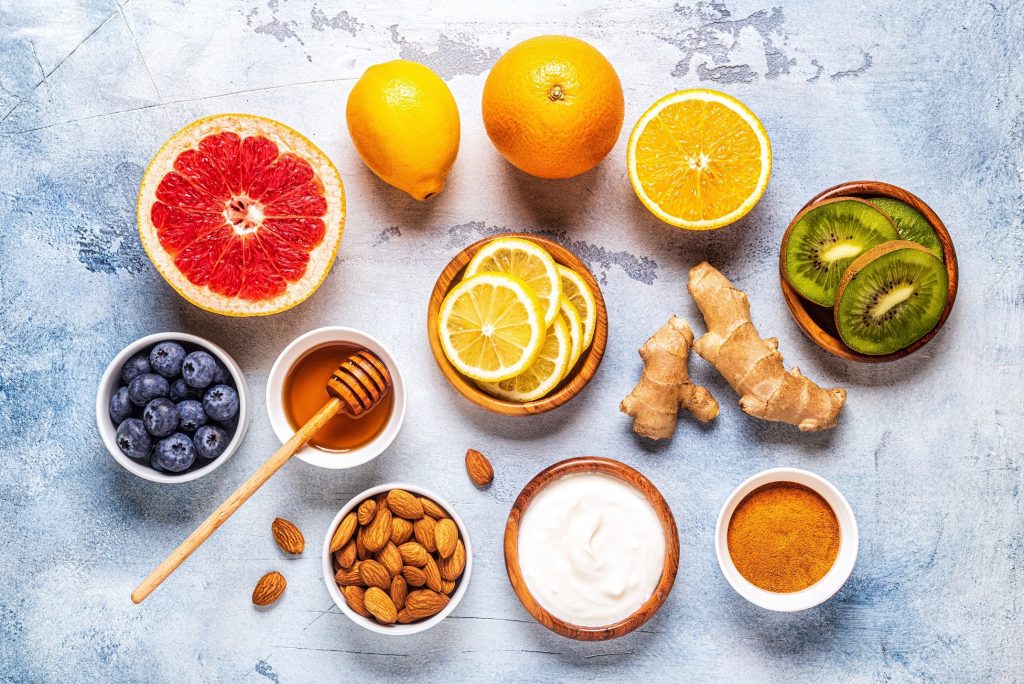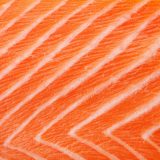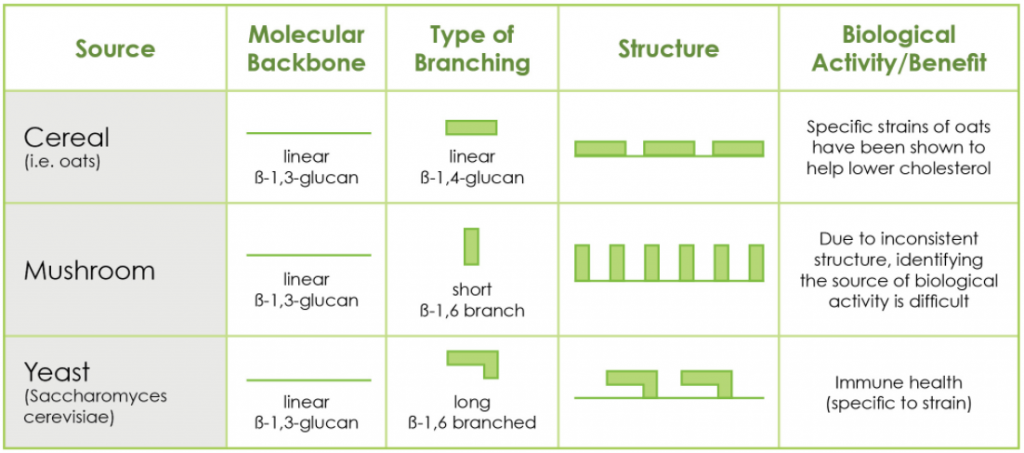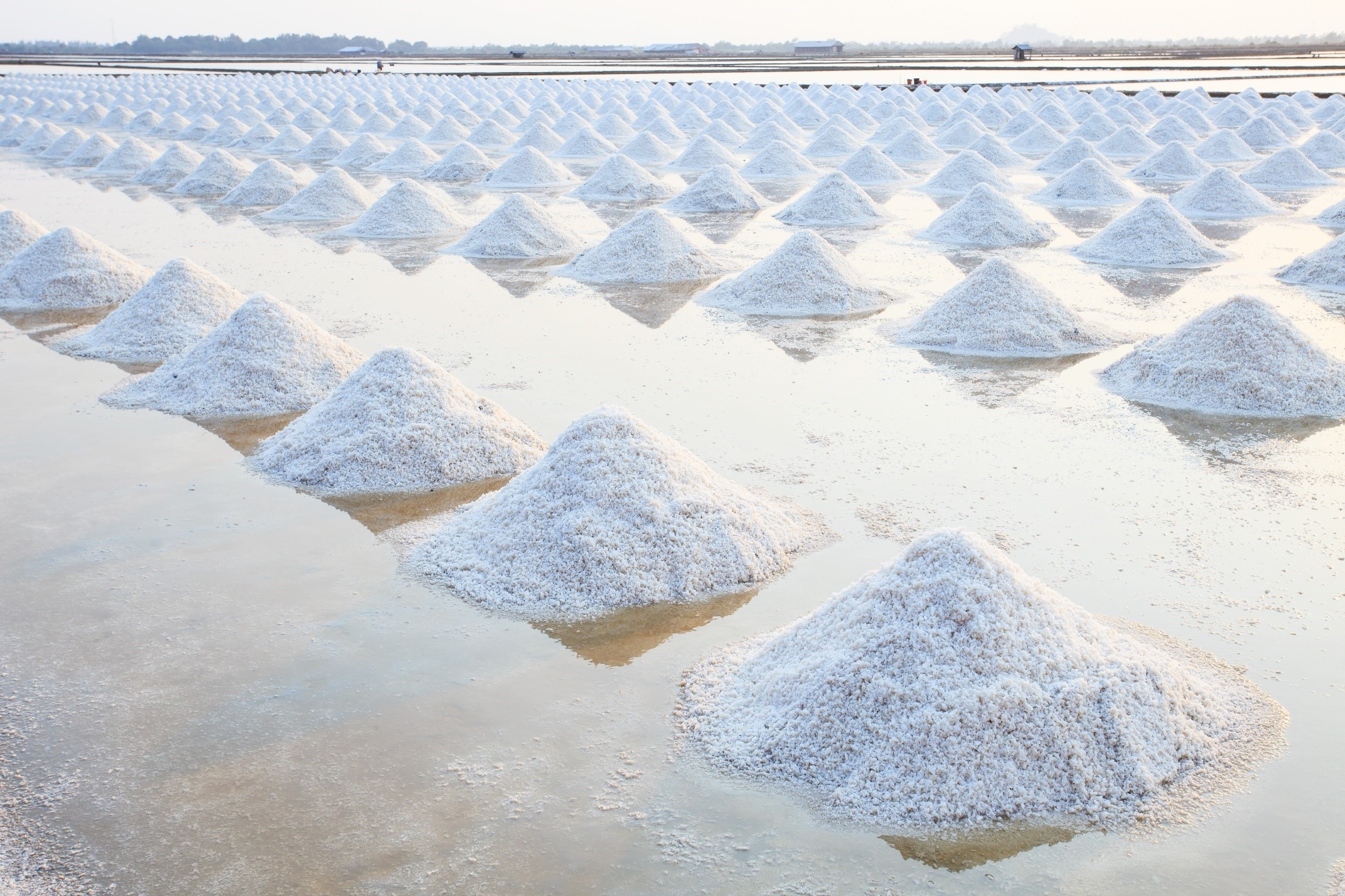Likely since the start of the current pandemic you have given some thought to your immune system and just how well it is functioning. If you’re like many others during those first months of the pandemic you turned to internet searches to learn more about your immune system and what proactive steps you could take to support its functions. During those searches, one of the terms that you may have encountered was “immunomodulators used with words like “nutrition” and “diet” or “food”. Why is this? And can food we eat really have immunomodulatory effects? In a word, yes.

What are immunomodulators?
An immunomodulatory compound, also called a biological response modifier or BRM in the pharmaceutical industry, is one that has the capacity to interact with the immune system in a specific way, altering the outcome of specific immune processes. The resulting changes could be either an increase or decrease in function depending on how much of the immunomodulator was consumed or administered as well as how that specific immunomodulator interacts with the immune system. Immunomodulatory compounds can be produced either endogenously (inside the body) or exogenously (outside of the body). Endogenous immunomodulators are compounds normally found within our body such as cytokines, hormones and growth factors. Exogenous immunomodulators can be synthetic (many prescription medications) or naturally occurring such as ingredients in our foods and nutritional supplements. Some of these ingredients are familiar, such as vitamins and minerals which are commonly understood to be necessary for the proper functioning of our bodies.1 For example, zinc helps activate and regulate immune cells so they can perform their job in the body.2
Examples of immunomodulators
 Omega-3 and omega-6 polyunsaturated fatty acids
Omega-3 and omega-6 polyunsaturated fatty acids- Carbohydrates such as glucans, mannans, fucoidans, fructans, xylans, and pectins
- Yeast beta-glucans
- Plant components such as astragalus root or echinacea flower, to varying degrees
There are many other types of naturally occurring compounds found in the foods and supplements we consume which have at least some scientific evidence that they have immunomodulatory activity. Many of these ingredients are plant-sourced and can be easily consumed in foods and nutritional supplements. Examples include omega-3 and omega-6 polyunsaturated fatty acids (PUFA) such as linoleic acid and oleic acid which are proposed to have anti-inflammatory effects in humans.3 The more familiar fatty acids, docosahexaenoic acid (DHA) and eicosapentaenoic acid (EPA) have been studied for a wide range of biological effects, including immunomodulation but are sourced mainly from marine animals.4 Plant-derived polyphenols such as curcumin and quercetin have been tested in human clinical trials for immunomodulatory (generally anti-inflammatory) activity as well as other biological effects.5
Some of the most well-studied immunomodulatory food ingredients are polysaccharides, a type of carbohydrate. Polysaccharides that have been examined for immunomodulatory activity mainly fall into six types: glucans, mannans, fucoidans, fructans, xlyans and pectins and galactans.6 Some of these polysaccharide ingredients are well known such as pectins, glucans and inulin (a fructan) for being dietary fibers. Others, such as carrageenan (a galactan), have been used as emulsifiers and texturants in foods for decades. Many of these polysaccharides seem to have immunomodulatory properties that have been examined with various degrees of scientific rigor.7
How do immunomodulators work?
A case study with beta glucan
A polysaccharide of particular interest due to the observed positive effects on health, more than 75-year history of scientific study and overall robust scientific data portfolio is beta glucan. Beta glucan occurs naturally in many different types of organisms ranging from yeast to mushrooms to bacteria and plants such as algae and cereal grains.
The beta glucans produced by these different organisms vary in chemical structure depending on which organism made it, and science shows that the biological activity a beta glucan has in the human body is linked to its specific structure.8 Because of this structure-activity relationship inherent in beta glucan biology, it is essential to clearly identify the source and chemical structure of a beta glucan when seeking out an immunomodulator food ingredient since not all beta glucans have immunomodulatory properties.9
Breaking down the structure
Beta glucans are long chains of sugar molecules linked by one of three types of chemical bonds from which they derive their name (β-(beta)1,3; -1,6 or β-1,4). You will see beta glucans commonly described based on their chemical linkage patterns. Yeast beta glucan (called β-1,3/1,6 glucan) is one of the most well studied types of immunomodulatory beta glucans. It has a linear β-1,3-linked backbone with long β-1,3-linked branches connected through β-1,6 linkages. It was identified as the primary immunomodulatory component of yeast in laboratory experiments approximately 80 years ago 10 and has been characterized in increasing detail through subsequent decades. Once scientists discovered the receptors that recognize yeast beta glucan in our body and allow it to bring about its effects on health, called CR311 and Dectin-112, great progress has been made toward a detailed understanding of how yeast beta glucan exerts its immunomodulatory effects.
Innate immune training and yeast beta glucan
Experts in the field currently understand that yeast beta glucan modulates the immune system partially through a phenomenon referred to as innate immune training.13 Innate immune training is the term used to describe the priming of the innate immune system by some types of immunomodulators. This concept can be understood by comparing it with the more familiar concept of immune memory. Immune memory occurs when we are infected with or vaccinated against a pathogenic organism (eg measles or whooping cough). Our immune system recognizes the challenge and fights it off, making antibodies in the process. The cells that make these specific antibodies stay in the body long-term and will respond quickly to that same pathogen if it were to enter the body again, which typically prevents further symptomatic infections from that pathogen.

In contrast, the innate immune system works on a shorter time frame but can still be trained by that same encounter with the pathogen described above. Instead of “remembering” that specific pathogen for a lifetime, innate immune cells become primed for an extended period of time (months to a year), or ready to respond to the next threat (of any type) more effectively than when the cells were not primed. In this case, the pathogen would have modulated the immune system to be more effective at fighting off a specific pathogen. This training effect has been shown to have real impact on human health, for example reducing all-cause mortality in the first two years of life for infants vaccinated with the tuberculosis vaccine.14 Encouragingly, in the last decade it has been recognized that the innate immune system can also be trained by encountering compounds that are not from pathogenic organisms such as beta glucan from baker’s yeast.15,16 This means we could experience a similar training effect from consuming food instead of being infected by a pathogen.
Innate immune training could be compared to a recreational athlete training for a more intense event such as a marathon. Imagine you are the athlete. You don’t know specifically what kind of weather and race conditions you will encounter on the day of the race but you have a set of skills that will get you through the race (running pace, mental strength, breathing techniques, etc.). You can prepare yourself to use these skills most effectively on the day of the race by training generally to run the distance in varied weather or terrain conditions. The goal of the regular training is to ready (prime) all your skills to perform at your best and complete the race to the best of your ability no matter what race conditions you encounter (challenge).
Ways yeast beta glucans can act as immunomodulators
Immune training by certain yeast beta glucans works in a similar way. The immune system cannot predict what the next challenge encountered will be, but when the innate immune system is trained by yeast beta glucan, innate immune cells are primed to activate the defense skills they possess (similar to run pacing, mental strength and breathing techniques for the athlete) more efficiently in order to combat the threat. Think of primed cells as ready for action but not yet acting in the absence of a threat.
There are a plethora of scientific studies describing the effects of yeast beta glucan on the immune system. A few highlights include studies reporting
-
- increased potential for producing the innate immune system’s chemical weapons (reactive oxygen species)17
- increased capacity to produce cytokines important for an effective immune response15,18
- increased speed and directionality of innate cells migrating toward a pathogenic challenge19-21
- enhanced engulfment ability (phagocytosis) of foreign challenges22
- reversal of experimentally-induced immune suppression23
- enhancing the body’s ability to make more innate immune cells.24
This increased readiness of multiple immune defense functions likely results in the effects observed in numerous clinical trials, showing improved outcomes in upper respiratory tract infections, an indicator of immune system efficacy. 25
Constant research is being done to understand the mechanisms of action of immunomodulators, so expect to see more studies in the future describing how these components of food can support immune health.
Contributor:
-
References
1 Maggini, S., Pierre, A. & Calder, P. C. Immune Function and Micronutrient Requirements Change over the Life Course. Nutrients 10, doi:10.3390/nu10101531 (2018).
2 Rink, L. & Gabriel, P. Zinc and the immune system. Proc Nutr Soc 59, 541-552, doi:10.1017/s0029665100000781 (2000).
3 Nicolaou, A., Mauro, C., Urquhart, P. & Marelli-Berg, F. Polyunsaturated Fatty Acid-derived lipid mediators and T cell function. Front Immunol 5, 75, doi:10.3389/fimmu.2014.00075 (2014).
4 Radzikowska, U. et al. The Influence of Dietary Fatty Acids on Immune Responses. Nutrients 11, doi:10.3390/nu11122990 (2019).
5 Jantan, I., Ahmad, W. & Bukhari, S. N. Plant-derived immunomodulators: an insight on their preclinical evaluation and clinical trials. Front Plant Sci 6, 655, doi:10.3389/fpls.2015.00655 (2015).
6 Di Sotto, A., Vitalone, A. & Di Giacomo, S. Plant-Derived Nutraceuticals and Immune System Modulation: An Evidence-Based Overview. Vaccines (Basel) 8, doi:10.3390/vaccines8030468 (2020).
7 Ramberg, J. E., Nelson, E. D. & Sinnott, R. A. Immunomodulatory dietary polysaccharides: a systematic review of the literature. Nutr J 9, 54, doi:10.1186/1475-2891-9-54 (2010).
8 Han, B., Baruah, K., Cox, E., Vanrompay, D. & Bossier, P. Structure-Functional Activity Relationship of Beta-Glucans From the Perspective of Immunomodulation: A Mini-Review. Front Immunol 11, 658, doi:10.3389/fimmu.2020.00658 (2020).
9 Othman, R. A., Moghadasian, M. H. & Jones, P. J. Cholesterol-lowering effects of oat beta-glucan. Nutr Rev 69, 299-309, doi:10.1111/j.1753-4887.2011.00401.x (2011).
10 Pillemer, L. & Ecker, E. Anticomplementary Factor in Fresh Yeast. J Biol Chem 137, 139-142 (1941).
11 Ross, G. D., Cain, J. A., Myones, B. L., Newman, S. L. & Lachmann, P. J. Specificity of Membrane Complement Receptor Thype Three CR3 for β-Glucans. (1987).
12 Willment, J. A., Gordon, S. & Brown, G. D. Characterization of the human beta -glucan receptor and its alternatively spliced isoforms. J Biol Chem 276, 43818-43823, doi:10.1074/jbc.M107715200 (2001).
13 Netea, M. G., Quintin, J. & van der Meer, J. W. Trained immunity: a memory for innate host defense. Cell Host Microbe 9, 355-361, doi:10.1016/j.chom.2011.04.006 (2011).
14 Garly, M.-L. et al. BCG scar and positive tuberculin reaction associated with reduced child mortality in West Africa. Vaccine 21, 2782-2790, doi:10.1016/s0264-410x(03)00181-6 (2003).
15 Quintin, J. et al. Candida albicans infection affords protection against reinfection via functional reprogramming of monocytes. Cell Host Microbe 12, 223-232, doi:10.1016/j.chom.2012.06.006 (2012).
16 van der Meer, J. W., Joosten, L. A., Riksen, N. & Netea, M. G. Trained immunity: A smart way to enhance innate immune defence. Mol Immunol 68, 40-44, doi:10.1016/j.molimm.2015.06.019 (2015).
17 Wakshull, E. et al. PGG-glucan, a soluble beta-(1,3)-glucan, enhances the oxidative burst response, microbicidal activity, and activates an NF-kappa β-like factor in human PMN: evidence for a glycosphingolipid beta-(1,3)-glucan receptor. Immunopharmacology 41, 89-107, doi:S0162310998000599 [pii] (1999).
18 Kankkunen, P. et al. (1,3)-beta-glucans activate both dectin-1 and NLRP3 inflammasome in human macrophages. J Immunol 184, 6335-6342, doi:10.4049/jimmunol.0903019 (2010).
19 Sato, T. et al. Induction of human neutrophil chemotaxis by Candida albicans-derived beta-1,6-long glycoside side-chain-branched beta-glucan. J Leukoc Biol 80, 204-211, doi:10.1189/jlb.0106069 (2006).
20 Niederman, R. et al. Enhanced neutrophil emigration and Porphyromonas gingivalis reduction following PGG-glucan treatment of mice. Arch Oral Biol 47, 613-618, doi:10.1016/s0003-9969(02)00042-0 (2002).
21 Tsikitis, V. L., Albina, J. E. & Reichner, J. S. Beta-glucan affects leukocyte navigation in a complex chemotactic gradient. Surgery 136, 384-389, doi:0.1016/j.surg.2004.05.014 (2004).
22 Rubin-Bejerano, I., Abeijon, C., Magnelli, P., Grisafi, P. & Fink, G. R. Phagocytosis by human neutrophils is stimulated by a unique fungal cell wall component. Cell Host Microbe 2, 55-67, doi:10.1016/j.chom.2007.06.002 (2007).
23 Novakovic, B. et al. beta-Glucan Reverses the Epigenetic State of LPS-Induced Immunological Tolerance. Cell 167, 1354-1368 e1314, doi:10.1016/j.cell.2016.09.034 (2016).
24 Patchen, M. L. et al. Mobilization of peripheral blood progenitor cells by Betafectin PGG-Glucan alone and in combination with granulocyte colony-stimulating factor. Stem Cells 16, 208-217, doi:10.1002/stem.160208 (1998).
25 Castro, E. M., Calder, P. C. & Roche, H. M. beta-1,3/1,6-glucans and Immunity: State of the Art and Future Directions. Mol Nutr Food Res 1901071, e1901071, doi:10.1002/mnfr.201901071 (2020).


 Sonja Nodland, PhD received a master’s degree in Cell Biology from Washington University in St. Louis and a PhD from the Microbiology, Immunology and Cancer Biology program at the University of Minnesota. Since that time, her scientific interests have expanded to include macrophages as well as how our immune system is influenced by our diet and the microorganisms present in our bodies.
Sonja Nodland, PhD received a master’s degree in Cell Biology from Washington University in St. Louis and a PhD from the Microbiology, Immunology and Cancer Biology program at the University of Minnesota. Since that time, her scientific interests have expanded to include macrophages as well as how our immune system is influenced by our diet and the microorganisms present in our bodies. 

